Lilies OT-hybrids: the best varieties, planting rules and breeding methods
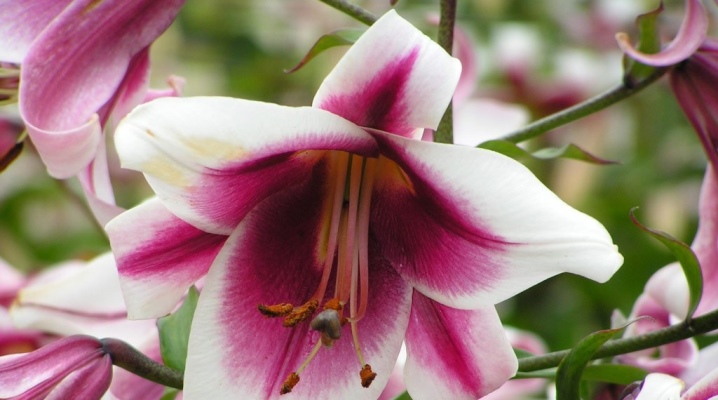
OT-hybrids of lilies were obtained by crossing specimens of the tubular species and oriental lilies, also called orientals. This type of lily owes its appearance to breeders in the United States, however, in a modern improved form, they came out of the hands of Dutch growers. The peduncle of this hybrid is incredibly strong, but the type of flower varies from cuboid to drooping. The maximum number of inflorescences of such lilies is large - up to 40 pieces per stem.
In fact, one stem can look like a complete bouquet. Due to their spectacular appearance, luxurious aroma, and height of the stems, OT hybrids are in great demand.
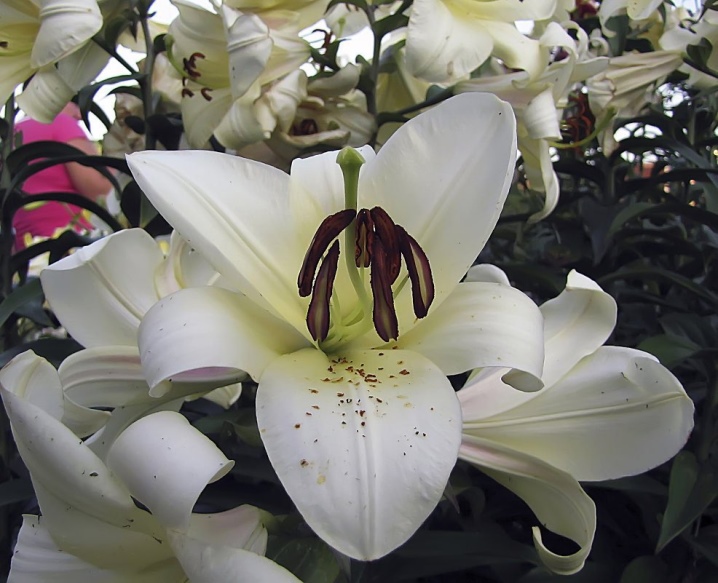
Main characteristics
Very often lilies in general and OT hybrids in particular are sold as lily trees, the number of inflorescences of which reaches hundreds of flowers. In fact, all botanists agree - there are no such varieties. Even so, the merits of OT lilies are incredibly diverse. This variety has a number of advantages that distinguish them from the whole variety of the lily kingdom.
Height. There are varieties of OT hybrids, which after a few years after disembarkation grow to incredible sizes - more than a meter, sometimes even up to one and a half meters. Therefore, this species looks great in landscape design, especially in a company with undersized varieties.
Original flowering. Such cascades with many inflorescences undoubtedly look luxurious and amaze with their magnificence and aroma.
Resistance to pests, diseases. Winter hardiness in many varieties is high, but shelter is required for the period of cold weather.

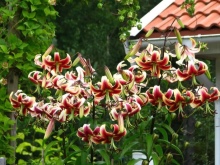
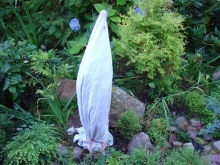
Review of popular varieties
OT hybrids today have many beautiful varieties. Lilies of this species are very popular not only among flower growers, but also among breeders. Each variety is distinguished by luxurious flowering, spectacular color, stem height. The best varieties come in astonishing variety.
Eastern Moon:
- erect stems, dense foliage;
- leaves are green with purple or brown streaks;
- stem height from 30 to 250 cm;
- foliage of either petiolate or sedentary type, length up to 20 cm;
- the arrangement of foliage is ordered, sometimes whorled;
- flowers of a single type or collected in small inflorescences in the form of an umbrella;
- color: white, orange, red, pink, yellow, lilac speckled, striped, or spotted.

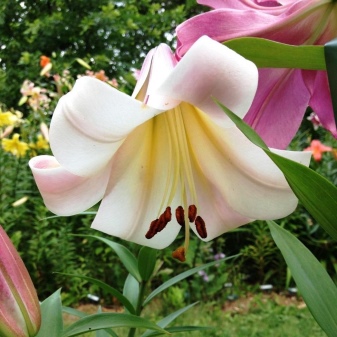
Lavon:
- very spectacular bloom with gilded petals;
- the ends are bent;
- in the center is a strip of berry shade;
- up to 30 flowers on one stem;
- flowering is directed in one direction.

Debbie:
- very high, up to one and a half meters;
- wine color with a strip of salmon shade;
- diameter up to 20 cm;
- luxurious aroma;
- love the sun.
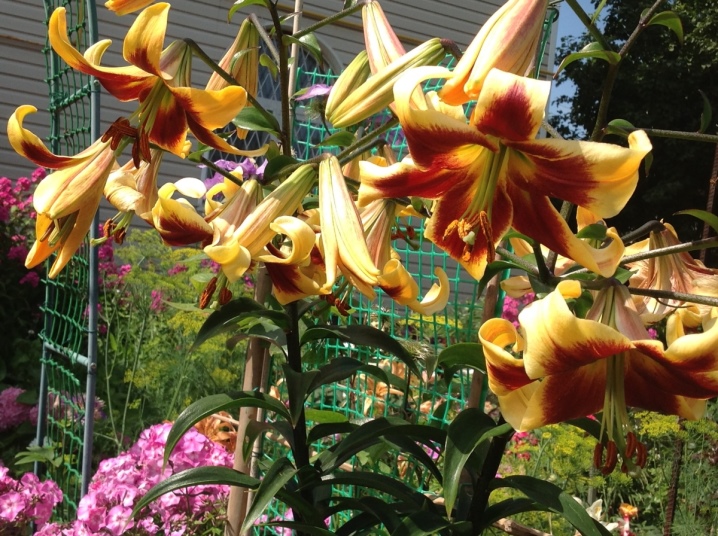
Bonbini:
- erect stem, densely covered with leaves;
- color green with purple;
- height up to 250 cm;
- pyramidal inflorescences;
- cream color with a bright pink border in the center.
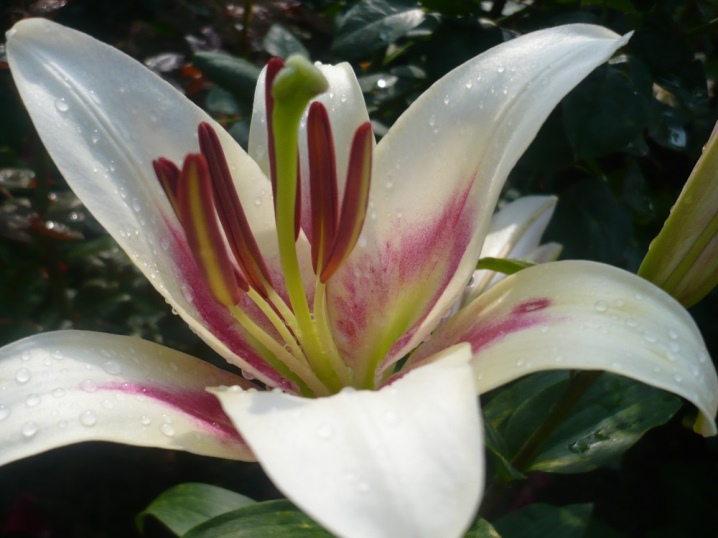
Morini:
- straight tall stems, dense foliage;
- average height;
- inflorescences like an umbrella or pyramid;
- predominantly yellow in color.
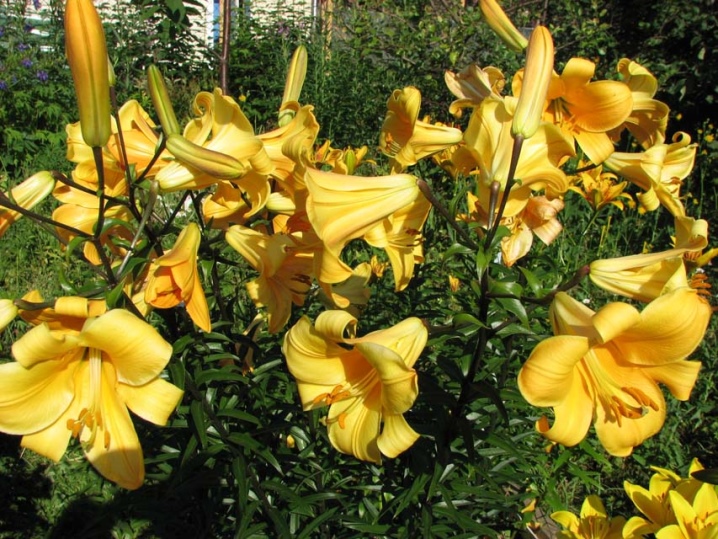
"Baruta":
- stem of a straight type;
- purple brown color;
- height reaches 120 cm;
- varied color: lilac, orange, pink, white, red, yellow;
- specks, spots may be present.
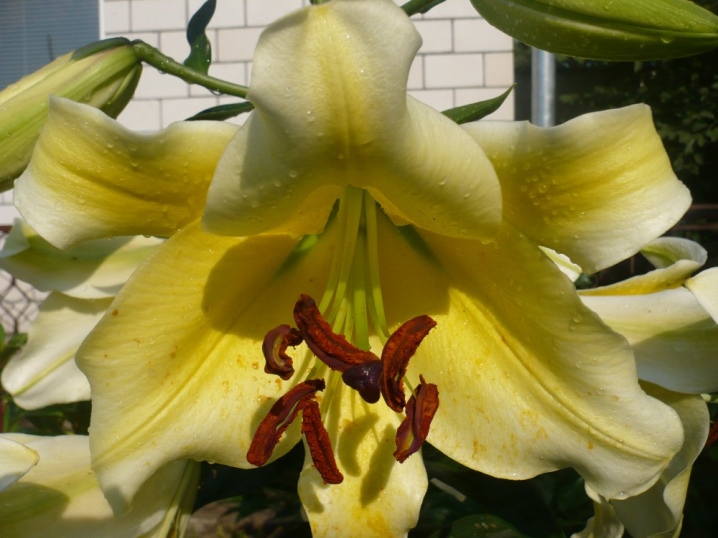
Robert Swanson:
- upright;
- stem green, height 30 cm;
- the color scheme is original: along the edges there is a juicy yellow color, in the center - a rich purple;
- inflorescences include several flowers.
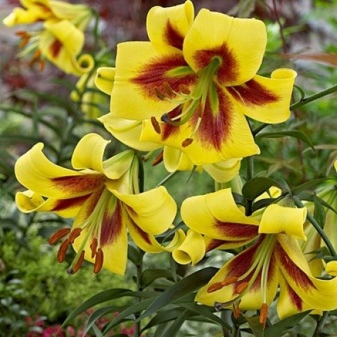
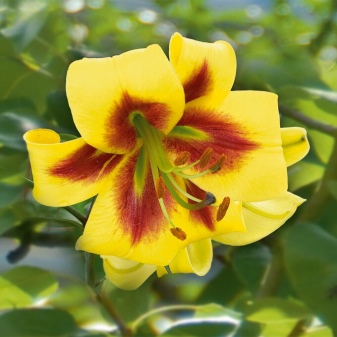
Baywatch:
- the petals are rounded;
- the color is pale pink, in the center - deep, juicy;
- diameter up to 25 cm;
- height above a meter.
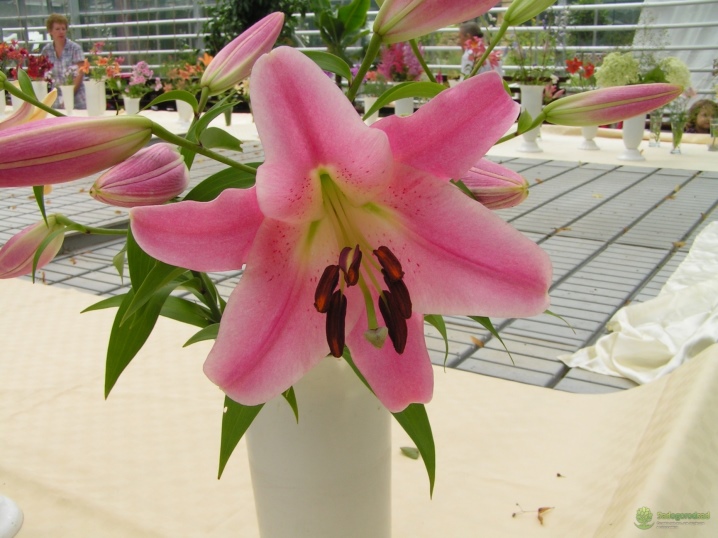
"Manissa":
- very bright aroma;
- flowers in the form of a funnel, directed to the sides and up;
- the color is soft yellow, the intensity increases towards the center;
- pharynx in a green tone;
- the edges of the petal are folded back.

"Pritty Woman":
- high, more than one and a half meters;
- large flowers about 30 cm;
- funnel shape, cream color, white;
- fragrant.
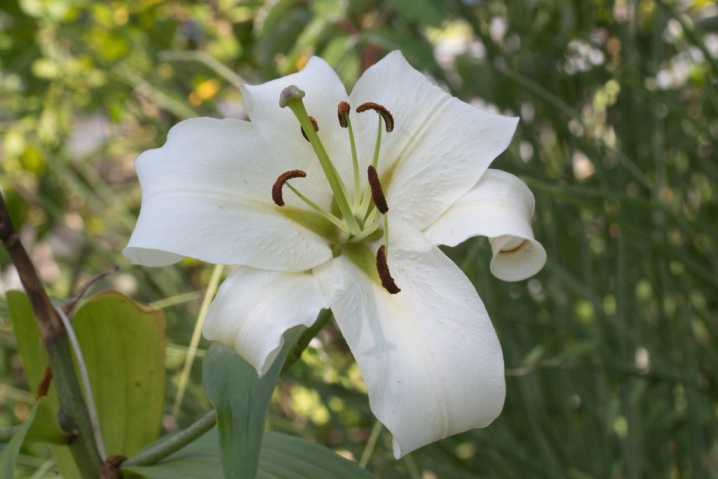
"Mr. Cas":
- flowering in the crossbar up to 20 cm;
- petals with waves, white and yellow;
- the direction of the inflorescences down;
- height 120 cm;
- fragrant.
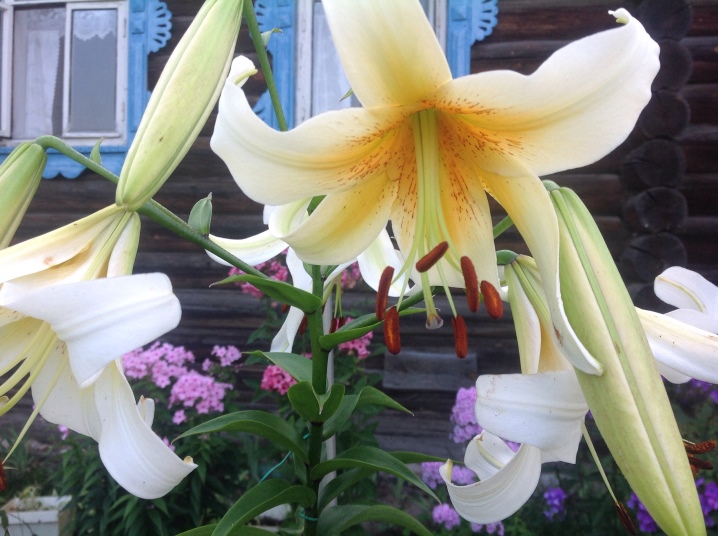
Saltarello:
- the stem is strong, high, about one and a half meters;
- the smell is strong, but delicate;
- the color is yellow with salmon tint;
- bowl-shaped;
- the minimum size is 20 cm.
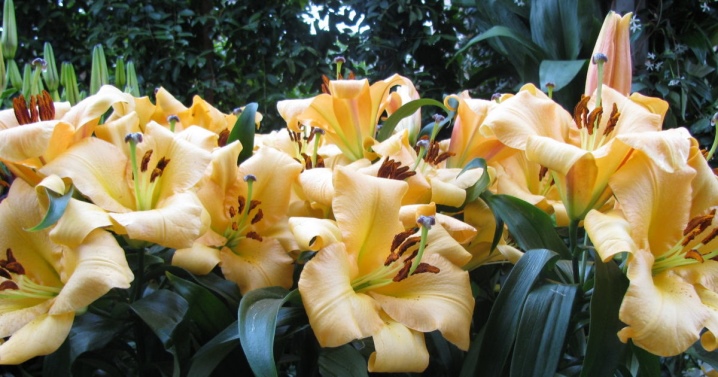
"He's stage":
- bloom about 23 cm in size;
- the head is yellowish;
- flowers rush up;
- height one and a half meters or higher.
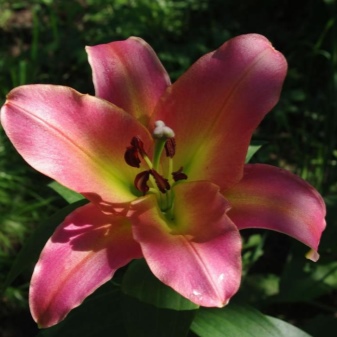
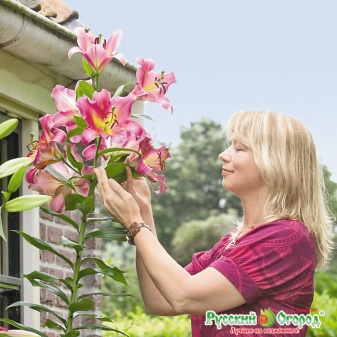
"Frizo":
- height up to 130 cm;
- flowers in the form of a tube, directed to the sides;
- color: white cream around the edges with a raspberry star in the middle;
- diameter up to 19 cm;
- the ends are curved, wavy;
- the stem is strong, of a dark shade of green.
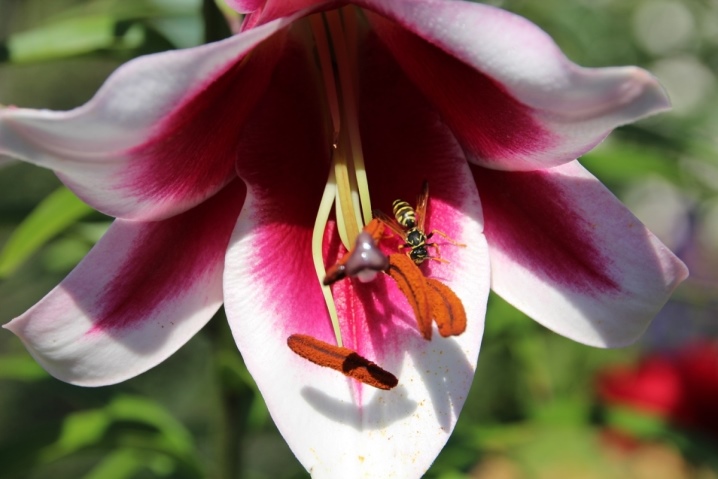
"Purple Prince":
- a very common variety;
- large flowers, petals are satin to the touch;
- bloom purple with burgundy, when closed it seems black.
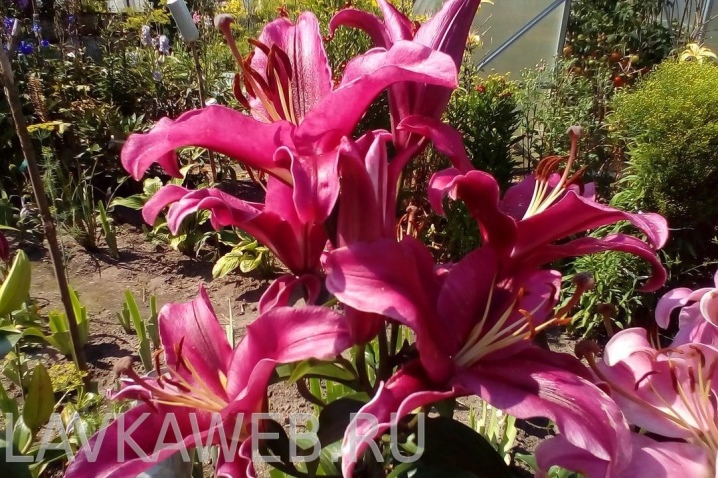
"Robina":
- high, about one and a half meters;
- stem is dark with even darker marks;
- bloom is large;
- the color is purple with a snow-white neck.
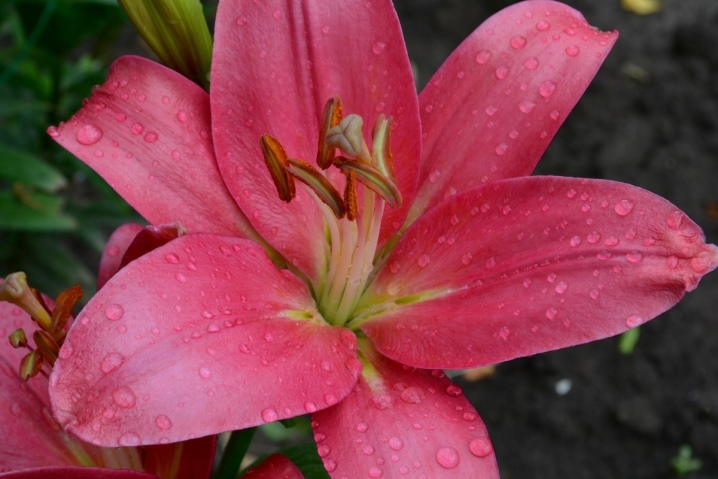
Miss Fairy:
- height up to a meter;
- the stem is erect, strong;
- leaves are green, dark;
- flowering about 25 cm across;
- the color is red with a snow-white border.
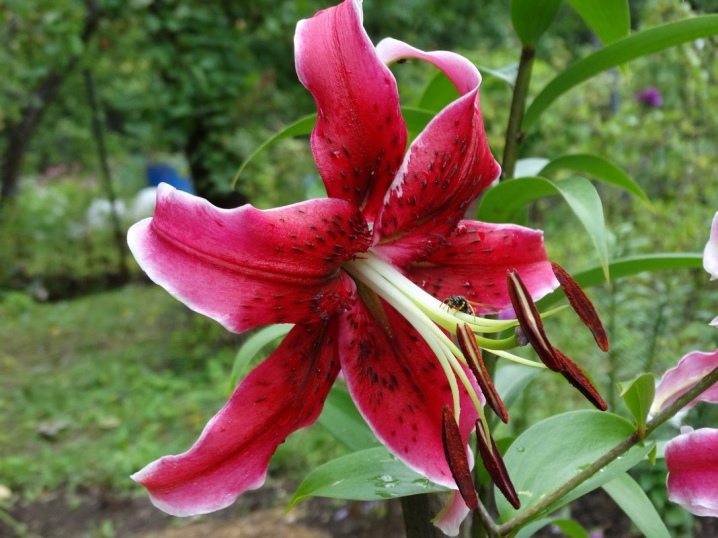
"Anastasia":
- height up to 2 m;
- bloom pink and white;
- the stem is graceful.

"Boogie Woogie":
- a little more than a meter in height;
- flowering white with pink;
- direction of inflorescences in different directions;
- the smell is pronounced, lily of the valley.
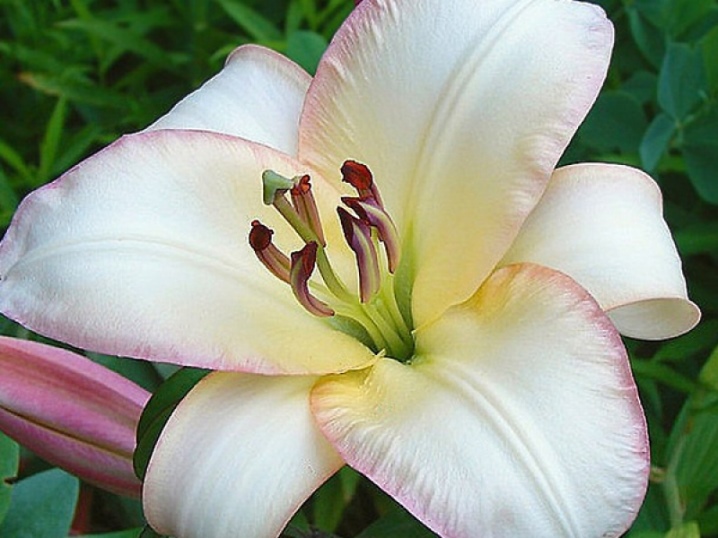
Landing rules
Without a transplant, lilies grow well for at least 3 years in one place. These plants need loose soil with drainage and a good level of nutrition. Do not plant hybrids on sand, clay, swampy areas. Before planting, the soil is dug up about half a meter. Then enter for each square meter:
- a bucket of peat with humus;
- half a bucket of wood ash;
- 100 grams of potassium sulfate;
- 100 grams of superphosphate.
However, the composition must be varied in accordance with the type of soil on the site, so that there is no overabundance of organic matter.

It is very important to choose the right place:
- tall stems can be broken by the wind, so a draft is unacceptable;
- at the same time, avoid air stagnation;
- a place close to bushes, but not under trees, is well suited.
Hybrids are planted at the end of September, but it is also possible in the spring. Purchased bulbs should be inspected for mucous membranes, putrefaction and stains.
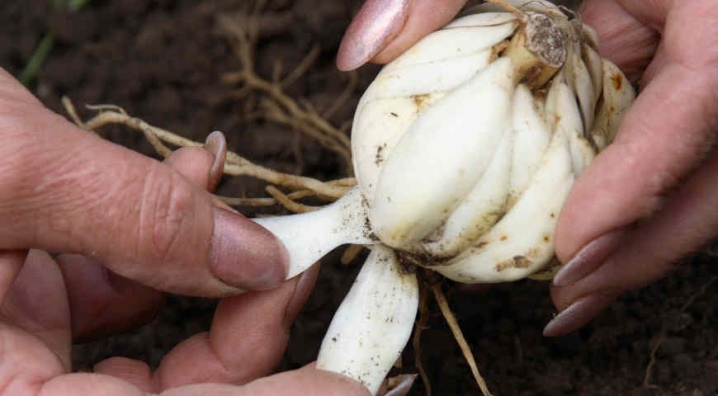
The landing algorithm is simple:
- deepen the bulb to a distance equal to three of its heights;
- the landing hole is filled with sand and ash;
- the roots are pruned;
- an onion is placed on the sand, the roots are straightened;
- it must be sprinkled with sand, then with soil;
- peat mulching is the final stage.
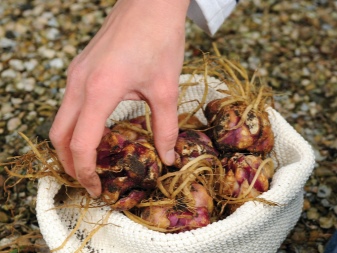

Care features
Hybrid lilies love organic and mineral feeding. You can use compost, chicken manure in a diluted state. Fresh manure cannot be used. Feeding with organic matter occurs in the spring, mineral complexes are introduced three times, the first time as soon as the earth began to thaw, but the snow has not melted yet.
In the open field, lilies winter well. However, there are varieties that require shelter for the cold season. Almost all OT hybrids are best covered in the first year after planting. The landing zone is mulched with needles or sawdust, then covered with a dry leaf. In the fall, the stems are cut completely. If lilies grow in a region with a harsh climate, it is better to cover them with plastic wrap from the rain.This will keep the soil dry and winter well.
In general, caring for hybrids is not difficult. In the absence of precipitation, regular moisture is required, especially in June. It is also important to weed and mulch the soil on time.


Reproduction methods
This type of plant reproduces different ways:
tubers (bulbs);
cuttings;
scales;
seeds.
Most often, the bulbs are separated when small tubers appear at the bottom. It is necessary to dig up the flower, carefully detach the onions and plant in a previously prepared place. Lilies are also propagated by scales, detaching 2-3 scales from the onion, planted and covered with sawdust, sand, regularly moistened until petals appear.
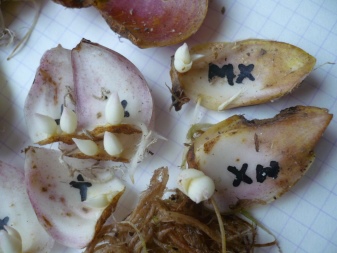
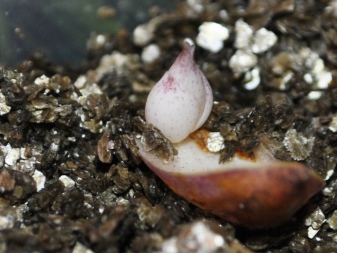
For grafting, parts of the stem with buds and foliage with a stem are used. Cuttings are cut, get rid of excess foliage, planted in the soil to a depth of 3 cm. After a month and a half, bulbs appear, which are planted in the ground before germination.
Seed propagation is also often successful, but it is quite time consuming. Sowing occurs at the end of winter, after the appearance of the leaves, you need to dive. The sprouts winter in the basement for the first time, they are transplanted in the spring.

Diseases and pests
Hybrid lilies often suffer from diseases of the fungal and viral type, especially if the plantings are neglected and the flowers are not properly cared for. Among the dangerous fungal ailments:
- rot of various types;
- rust;
- fusarium.
Flowers become infected with viruses from insects or tools, it can be:
- mosaic;
- rosette;
- variegation.
Bulbs and stems are a very appetizing attraction for pests: red beetle, leaf beetle, aphids. Since hybrid lilies are often susceptible to attacks, it is necessary to take preventive measures that strengthen the immune system and repel insects:
- seedlings are treated with special solutions: Bordeaux liquid, copper oxide;
- the bulbs are treated before planting with Fundazol or Karbofos.
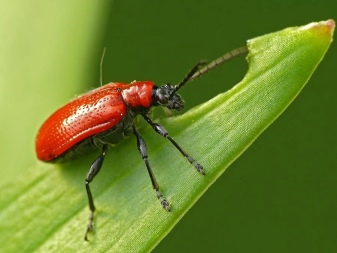

Examples in landscape design
The exuberant bloom of lilies of different heights together makes a spectacular impression.
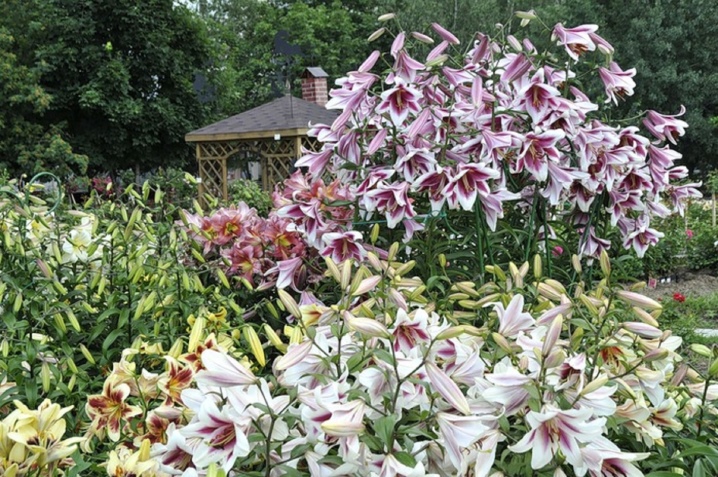
Variety "Frizo" will perfectly decorate any garden area.
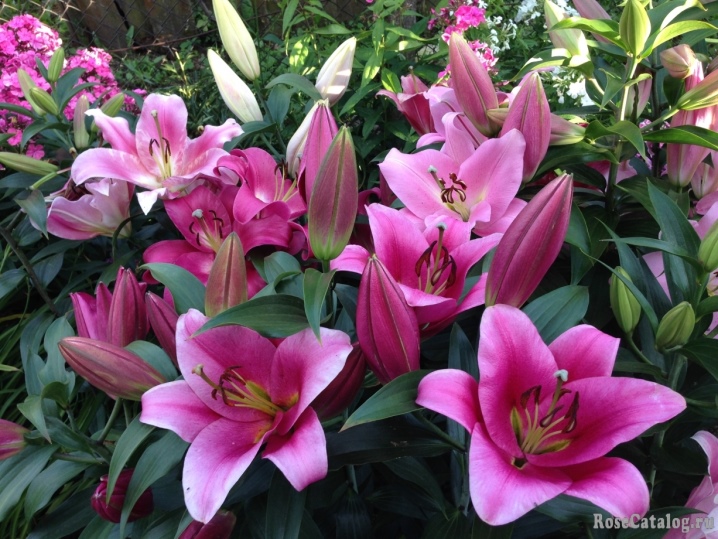
Lilies look great against a background of lush greenery in any variation.
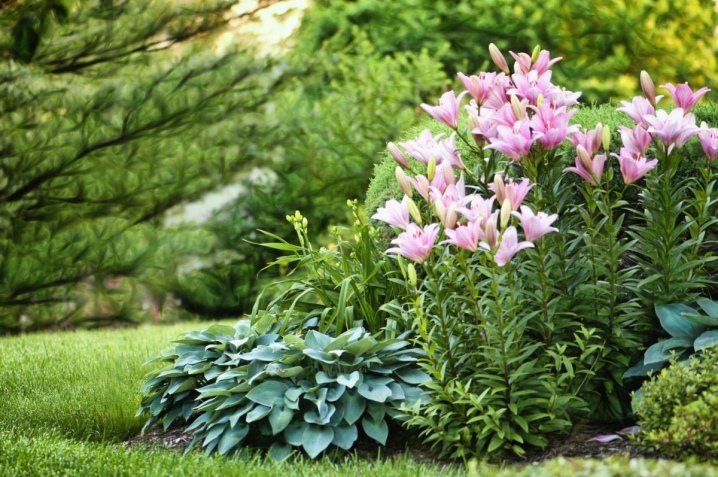
Different varieties connected by one flower bed - an original solution.
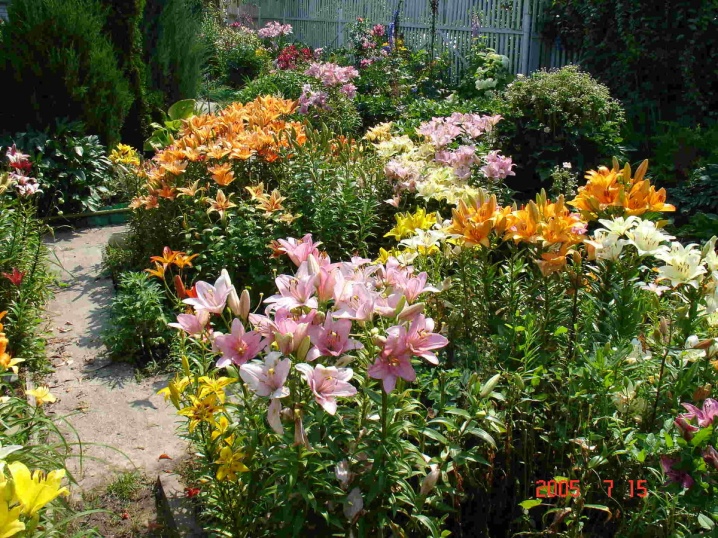
OT hybrids look great along the lanes, but remember that they are very tall.
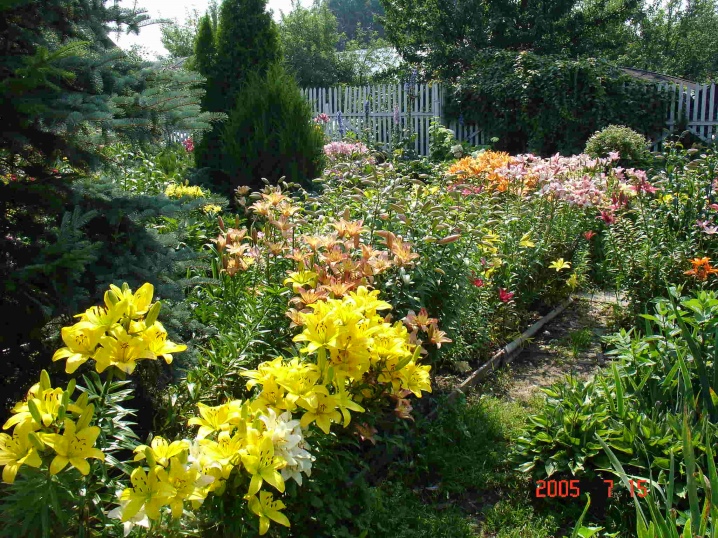
For the rules of caring for the Saltarello lily, see below.







































































































The comment was sent successfully.